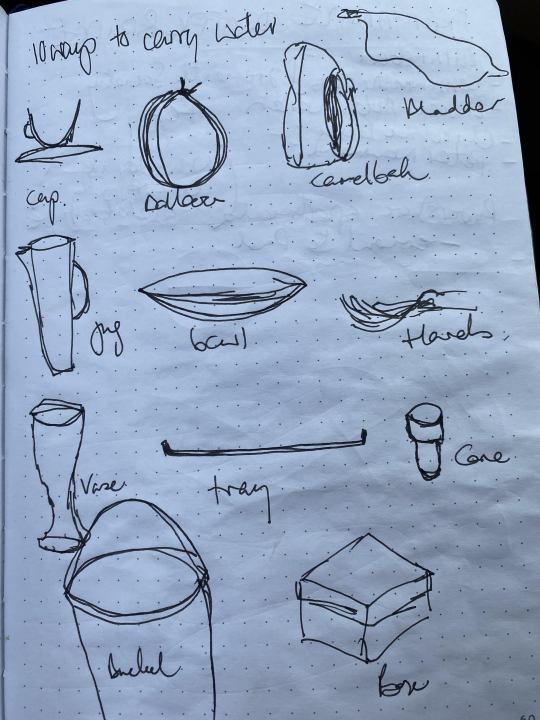#503designthinking
Explore tagged Tumblr posts
Photo

I’ve been doing a little more research into why sketching is beneficial to the design process. It turns out it also has significant benefits for health and well-being, cognitive processing and creative thinking. Who knew?
I didn’t actually realise how much I use sketching through out my day to day processing until I read some of the articles I found. I’m always sketching out layouts before pulling together information. I doodle prolifically during lectures and meetings, often times noting key information and sense making complex ideas. I often copy shapes that I see in lectures and books to act as prompters, markers and explain ideas simply. Interesting. I never considered this sketching.
This article on design tuts+ inparticular got me thinking about the sketching I do. It suggests that sketching is critical in communicating ideas, useful for developing lay out and handy to explore concepts.
0 notes
Text
Sketching
Watching the Ted Talk featuring Tim Brown talking about creativity and play was very enlightening. In it he talks about the importance of practising creativity. He demonstrates a simple exercise known as 30 circles and pushes his audience to sketch as many different things those circles could be in 1 minute.
I tried this exercise and initially froze, as I always do when pushed to be creative, but after a little while, I let go. I made a pair of glasses from two circles, a snowman out of another three, a frisbee, plate, pizza, apple pie, blueberry, out of others.
I realised two things:
1. I really enjoy sketching, I always have. I’ve always been someone that doodles when someone talks to me. I can’t take in information properly if I’m not doing it.
2. The more of these activities I do, the better I will become, at both sketching and creative thinking.
I’ve been practising both regularly in my journal. Trying to push my boundaries of creativity and stop the critic in me yelling out too loudly.
0 notes
Text
Designers verses others
I have always felt a tension between the designing profession and outsiders. As a community development professional, I have sometimes felt excluded by the likes of architects and urban designs when creating places for people. I have also observed designers deriding design thinking, as ‘other professionals’ trying to be designers with out the use of training, aesthetics and ability (need I say god given skill?).
One thing I have noted during this unit, is that the tools of designers (journey maps, service blueprints, heat maps) are not dissimilar to the tools I use as a community development professional We just don’t have complex names for them in the same way that the design professions does.
This is not a judgement. Its actually a really good way of working.
I think this is indicative of a different ways each professional approaches their job. Many design professionals sit in agencies who pitch for work. When you bring together all the critical information used to inform your design, you need to explain how you came to the conclusion and step the client through the process. Working inside government and big business, I have never had to do this in such a comprehensive way.
I will definitely adopt this approach going forward. Its useful to bring together a comprehensive brief to really understand what you are doing and why you are doing it.
0 notes
Text
What is the difference?
Between God and a Designer?
God doesn’t think he is a designer.
When I started reading about Hilary Cottom, a UK based social scientist who was the 2005 Designer of the Year, I had a huge ��Aha’ moment. Hilary was award the honour despite not being a trained designer. She used a design approach to social policy and pulled together teams of designers to implement changes. She received hate mail from designers. Design media criticised the British Design Council for their decision. It took fortitude and guts but is a true demonstration of how good design thinking can be used to create great social change not just small things.
youtube
0 notes